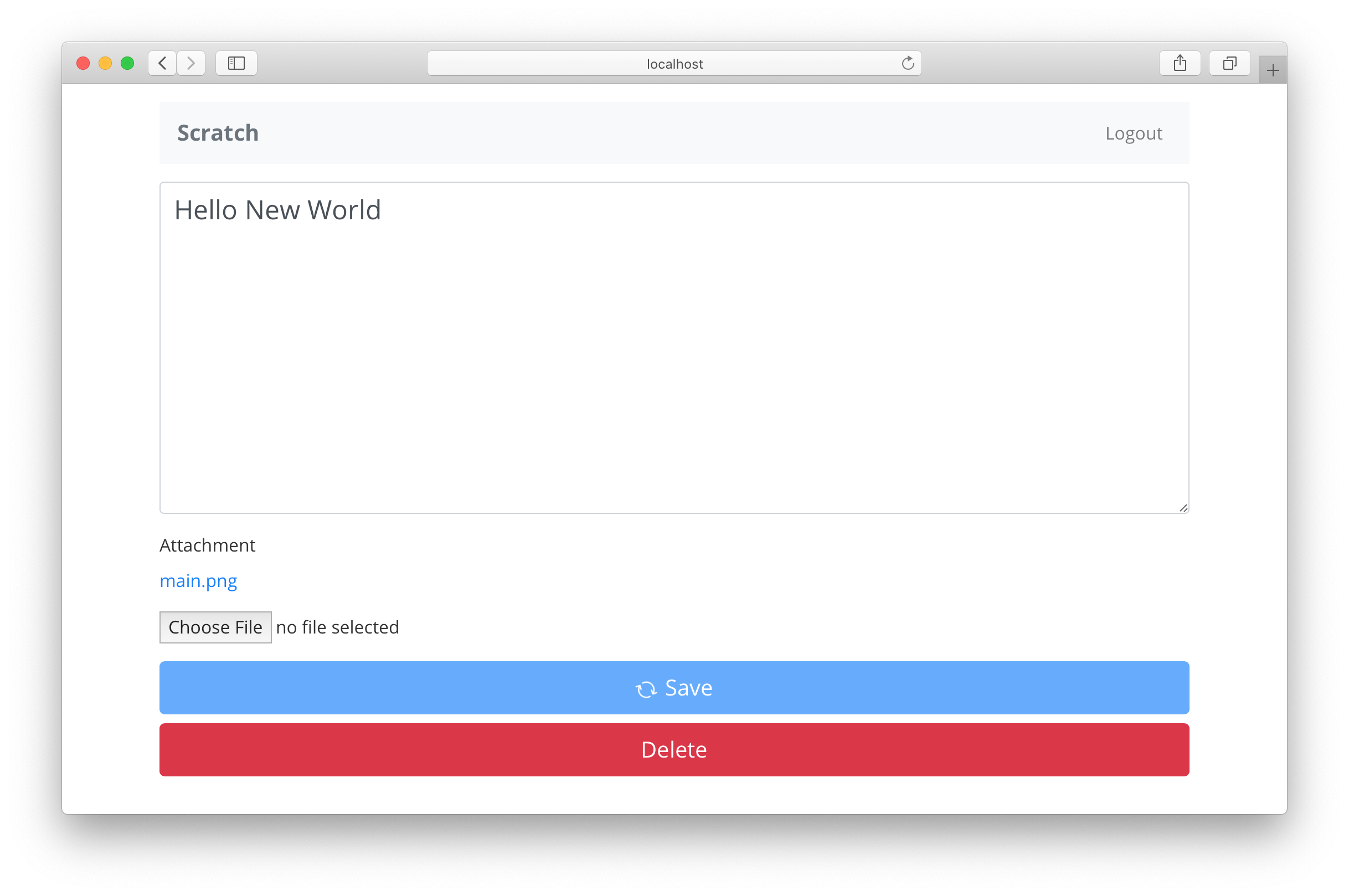Save Changes to a Note
Now that our note loads into our form, let’s work on saving the changes we make to that note.
 Replace the
Replace the handleSubmit function in src/containers/Notes.js with the following.
function saveNote(note) {
return API.put("notes", `/notes/${id}`, {
body: note
});
}
async function handleSubmit(event) {
let attachment;
event.preventDefault();
if (file.current && file.current.size > config.MAX_ATTACHMENT_SIZE) {
alert(
`Please pick a file smaller than ${
config.MAX_ATTACHMENT_SIZE / 1000000
} MB.`
);
return;
}
setIsLoading(true);
try {
if (file.current) {
attachment = await s3Upload(file.current);
}
await saveNote({
content,
attachment: attachment || note.attachment
});
history.push("/");
} catch (e) {
onError(e);
setIsLoading(false);
}
}
 And include our
And include our s3Upload helper method in the header:
import { s3Upload } from "../lib/awsLib";
The code above is doing a couple of things that should be very similar to what we did in the NewNote container.
-
If there is a file to upload we call
s3Uploadto upload it and save the key we get from S3. If there isn’t then we simply save the existing attachment object,note.attachment. -
We save the note by making a
PUTrequest with the note object to/notes/:idwhere we get theidfrom theuseParamshook. We use theAPI.put()method from AWS Amplify. -
And on success we redirect the user to the homepage.
Let’s switch over to our browser and give it a try by saving some changes.

You might have noticed that we are not deleting the old attachment when we upload a new one. To keep things simple, we are leaving that bit of detail up to you. It should be pretty straightforward. Check the AWS Amplify API Docs on how to a delete file from S3.
Next up, let’s allow users to delete their note.
For help and discussion
Comments on this chapter





